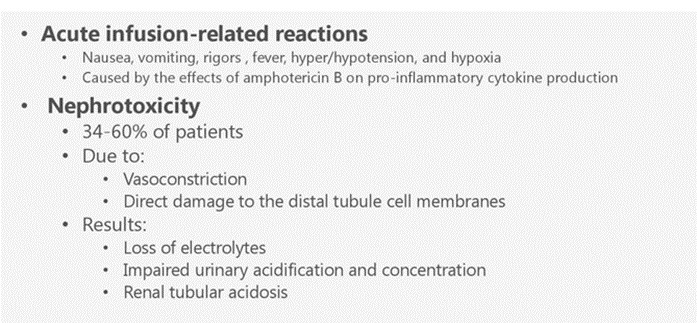A nurse is caring for a client who has diabetes insipidus and is receiving desmopressin by intermittent IV bolus. Which of the following manifestations should indicate to the nurse a therapeutic response to the medication?
Increase in serum glucose
Decrease in blood pressure
Decrease in urine output
Increase in WBC count
The Correct Answer is C
Choice A Reason:
Increase in serum glucose is incorrect. Desmopressin, which is a synthetic form of vasopressin, primarily affects water reabsorption in the kidneys and doesn't directly impact glucose levels. Therefore, an increase in serum glucose wouldn't be an expected therapeutic response to desmopressin for diabetes insipidus.
Choice B Reason:
Decrease in blood pressure is incorrect. Desmopressin is primarily used for its antidiuretic effect, concentrating urine by increasing water reabsorption in the kidneys. It typically doesn't have a significant impact on blood pressure. Therefore, a decrease in blood pressure wouldn't typically be an anticipated therapeutic response to desmopressin in this context.
Choice C Reason:
Decrease in urine output is correct. Desmopressin is a synthetic form of vasopressin (antidiuretic hormone) used to treat diabetes insipidus, a condition characterized by excessive urination and extreme thirst due to the inability to concentrate urine. The primary goal of desmopressin is to reduce urine output by increasing water reabsorption in the kidneys, thereby decreasing excessive urination. Therefore, a decrease in urine output would indicate a therapeutic response to the medication in this context.
Choice D Reason:
Increase in WBC count is incorrect. Desmopressin's action is centered on affecting kidney function by regulating water reabsorption and does not involve changes in white blood cell count. Consequently, an increase in WBC count wouldn't be an expected therapeutic response to desmopressin for diabetes insipidus.
Nursing Test Bank
Naxlex Comprehensive Predictor Exams
Related Questions
Correct Answer is B
Explanation
Choice A Reason:
Dry cough is incorrect. While cough can be a side effect of amphotericin B, it's not a hallmark sign of an acute infusion reaction.
Choice B Reason:
Fever is correct. Acute infusion reactions to amphotericin B can manifest in various ways, and fever is a common sign indicating an immediate adverse reaction during the infusion. Other potential signs of an acute infusion reaction may include chills, rigors, hypotension, flushing, headache, or nausea.
Choice C Reason:
Pedal edema is incorrect. Swelling of the feet or pedal edema is not a typical manifestation of an acute infusion reaction to amphotericin B.
Choice D Reason:
Hyperglycemia is incorrect. Increased blood glucose levels (hyperglycemia) are not commonly associated with an acute infusion reaction to amphotericin B. However, amphotericin B may have effects on electrolytes and kidney function that could indirectly impact glucose levels.

Correct Answer is C
Explanation
Choice A Reason:
Determine factors that led to the omission. Understanding why the dosage was missed is crucial. Was there a specific reason such as an interruption, conflicting priorities, or confusion in the medication schedule? Identifying these factors can help prevent future omissions and improve the medication administration process.
Choice B Reason:
File an incident report. If the missed dosage poses any potential risk or deviation from the prescribed treatment plan, it's important to document the incident through an incident report. This ensures transparency and allows the healthcare team to address and learn from the situation.
Choice C Reason:
Report the missed dosage to the client's provider. Informing the client's healthcare provider about the missed dosage is crucial. The provider can assess the situation and provide guidance on whether any adjustments or additional steps are necessary to ensure the client's well-being.
Choice D Reason:
Assess the client for adverse reactions. Monitoring the client for any adverse reactions or changes in their condition is essential after a missed dosage. This observation helps detect any potential effects of the missed medication and allows for prompt intervention if needed.
Whether you are a student looking to ace your exams or a practicing nurse seeking to enhance your expertise , our nursing education contents will empower you with the confidence and competence to make a difference in the lives of patients and become a respected leader in the healthcare field.
Visit Naxlex, invest in your future and unlock endless possibilities with our unparalleled nursing education contents today
Report Wrong Answer on the Current Question
Do you disagree with the answer? If yes, what is your expected answer? Explain.
Kindly be descriptive with the issue you are facing.
